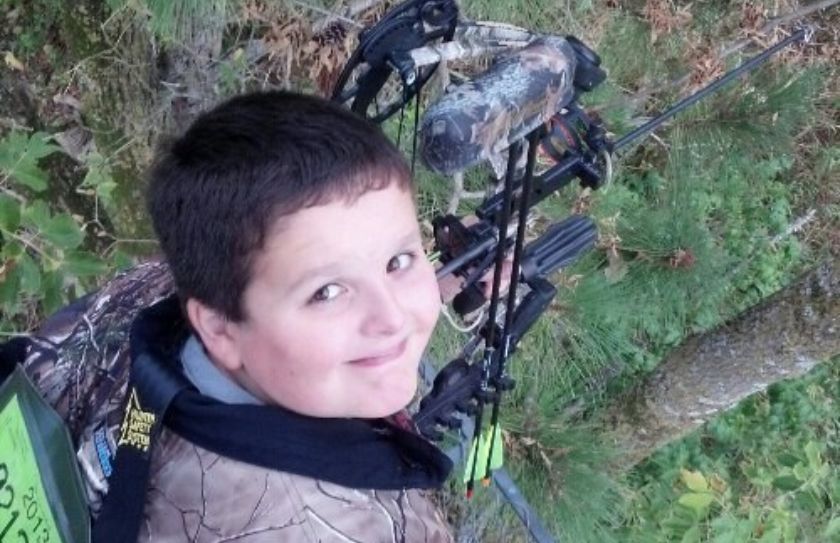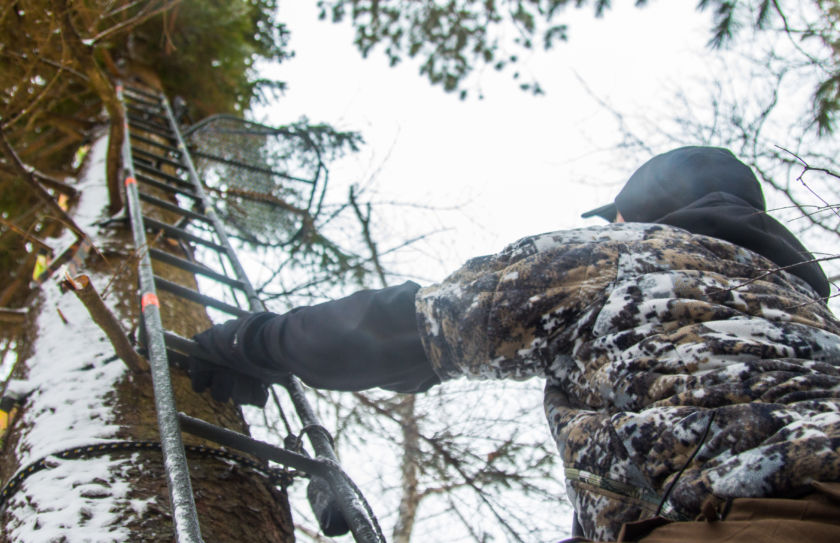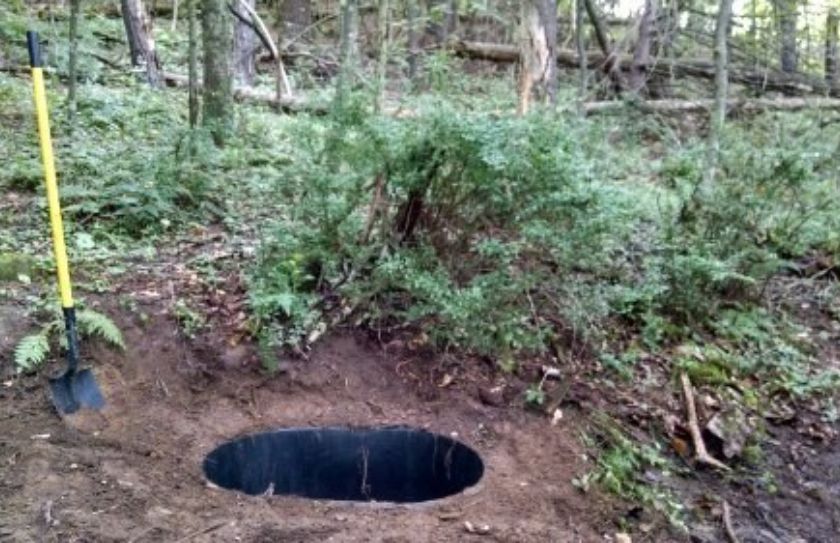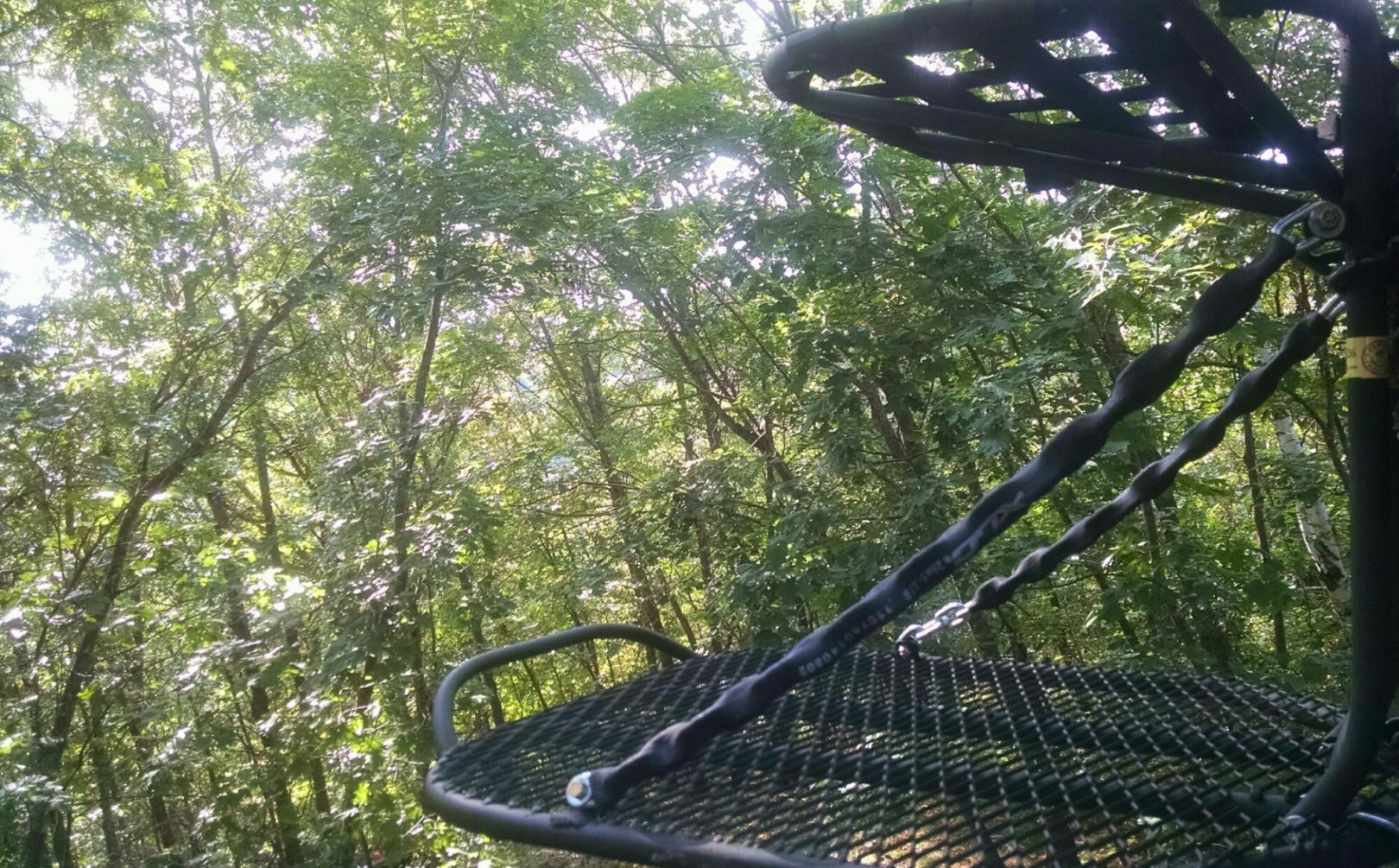
When is your favorite time to hang a tree stand? Are you a mid Winter kind of hunter? What about a Spring or early Summer stand placement? Or, are you one of those treestand sitters who prefers the "just in time" approach (like me sometimes), with a September or October installation time? The question of "When to hang a tree stand" can lead to a huge variety of right answers, which will all be uniquely reflective of an individual's specific hunting style. Would it surprise you if I said that in my experience there is no right answer?
Since the late 80s, preparing a stand location several weeks to several months prior to actually taking a seat, has been an extremely huge advantage for me when it came to harvesting may mature bucks. Although a large number of folks prefer or need to use climbing stands (I do at times as well!), I would estimate that roughly 1/2 of my mature bucks would not have been able to be connected on, while using a climber. Noisy access, scent and intrusion levels are all a product of climbing stands that we each unfortunately have to deal with at times. However there is nothing better than entering a weather-washed pre-hung tree stand quickly and quietly, with a high level of precision. If you exclusively use climbers I would recommend choosing and pre-pruning your potential climbing trees early in the year to deminish a portion of the negative effects, but even you too can find a higher level of success while considering the following timeline.
Timeline for When To Hang a Tree Stand
Here is my seasonal timeline for when to hang a tree stand, which includes the various strategies for each specific set of weeks or months. There is absolutely no right answer, so you just have to make sure that you match your needs to the appropriate period of time and set of strategies.
January to May:
What defines this period of time for hanging a stand, and is it really the best time? January is typically the time when the majority of hunting seasons are ending, while May marks the end of Spring green-up across the North 1/2 of the country. There are some advantages to hanging your tree tands early, but there are also some disadvantages that you may want to consider as well.
*Hanging a stand during the late Winter can be great for the person with a little flexibility and time. The local deer herd can easily become accustomed to any changes that you create in the woods while pruning shooting lanes and limbs, and there is also plenty of time for the odor from stinky stand materials to disappear and become nearly undectable to a deer's nose. This is my preferred time of the year to set large ladder stands, shooting houses and "condos" because each create varying levels of increased intrusions. Many consider this to be the best time of the year, but is it?
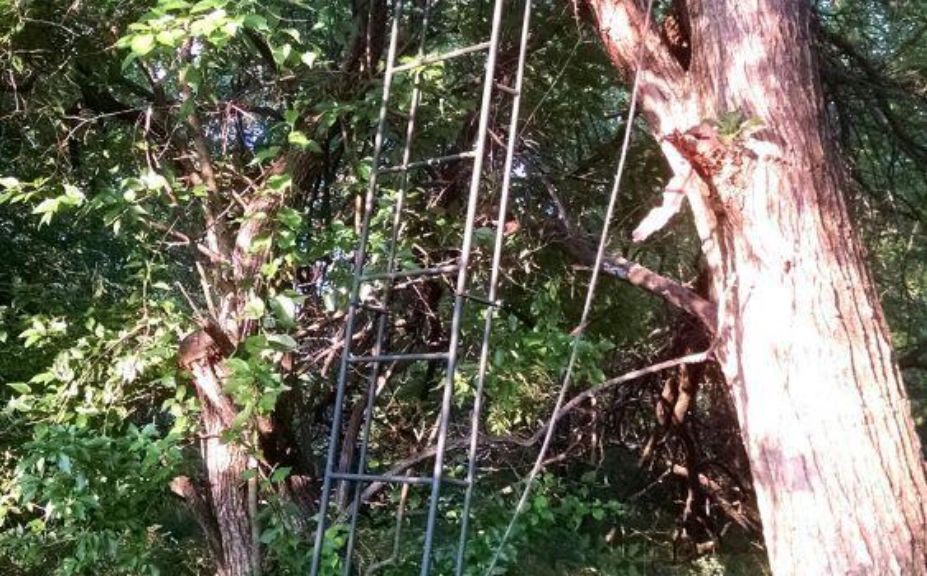
*Once you have a collection of stands in place, how do you hunt them? To make some sense of choosing your next great stand to sit in, try reading "Tree Stand Rotation Strategies".
*Trees expand, squirrels chew and shooting lanes can become much tighter following the period of aggressive growth from Spring through early Summer. Hanging a tree stand between January and May may be the best time to leave your ambush site unknown to the detective efforts of an old, Fall-cruising monarch, but without at least a little follow up during mid-Summer you may be walking into an ambush yourself!
Throughout the years my hunting buddies and I have slowly moved away from this period of time, to the next period of time which includes late Spring to early Summer. There are several reasons for this, including safety and effectiveness (which will be both be discussed shortly), but just as importantly is the fact that we increasing are finding it difficult to create the necessarly follow up time, to offer the level of certainty in our tree stand sets that we demand. When I access a stand for the first time during an early morning late October pre-rut hunt after a 50 minute walk in, I need to make sure that the stand is safe and that the shooting lanes are clear. If you have the time, a bit of a compromise can be taken advantage of.
Several years in the past, I had the luxury of being able to clear shooting lanes by using a 20' climbing stick prior to Spring green-up to make sure that we were cutting limbs and trees to the correct elevation of the stand. The stand locations were chosen, the lanes were cleared, and all that was left during the mid-Summer was to return, make sure that the lanes were still clear, re-position the climbing stick and hang the stand. By being able to focus on two separate seasons to work on tree stand hanging activities, a much higher level of hunting certaintly and safety could be offered.
June to August:
This is when my activies really heat up, while beginning to hang my personal tree stand sets. My client season runs solid and strong from Mid December to June, so rarely do I work on my own hunting properties until well into the months of Summer. Clients and readers often ask when to hang a treestand, and my answer is more of a question than anything: "When are your bedding areas, travel corridors and food plot locations set for the year"? Because the tree stands come nexts. Do you have a favorite tree to hang a stand in? I do, and that would include either red or white cedars. They are virtually "sap free", smell great and offer a significant amount of cover. But merely choosing my stand location by a favorite type of tree is no better than choosing a food plot location purely because of soil type. Instead of the first step in the process, hanging a stand should often be the last step in the process, which is another great reason the period of late Spring to mid Summer a great time to install your favorite hang-on.
*When you hang a tree stand during the growing season, you can make sure that the season's fresh young growth is well out of the way of your intended shooting lanes, and while you are at it the same can be said for your hunter access routes. This may be the perfect time to make sure that your climbing trees are well prepared as well! As each week passes the liklihood that critters will chew your stand parts passes, while the passing of time also allows the majority of trees to expand to their annual new levels of growth. Also it can't be overstated, you should have plenty of time to more accurately scout and define the local deer movements, whether you are on private or public lands.
*New hunting land dictated that I had a lot to get together during a short period of time. To find out how I was able to narrow down my stand locations, read "New Whitetail Lease Hunting Strategies".
*The closer you move towards August, the closer you move towards a period of time that excessive clearing and pruning activities will be discovered by cruising monsters during the Fall. While I have experienced that doe family groups appear to get used to minor changes quickly, I have discovered the hard way that the more a buck matures, he does not. There is a balance that you need to assess. Major changes within a whitetail's home range can take place to a pretty high degree prior to Spring green up, but as each month passes the local deer herd (in particular mature bucks) will tolerate less and less.
September to December:
I believe that there is a period of time that a deer will forget about negative human encounters, which I refer to as, "Weeks of Forgiveness". The length of time it takes for a mature buck to forget about an intrusion will vary greatly from location to location. Some of the factors that dictate how many weeks a mature buck will re-establish his old patterns after an encounter of hunting pressure are as follows:
1. High areas of human populations are the easiest locations to overcome. For example, while the neighborhood bucks of large suburban areas may on the surface appear to be highly pressured due to the extreme number of people that surround them, when in actuality they become quiete accustomed to human scent, sound and site. The teenager who shoots 100 jump shots a day, neighborhood walking or bike trails and excessive amounts of vehicular traffic are just some of the daily intrusions that a subdivision deer can easly become accustom too. Same day tree stand hanging activities can sometimes be practiced in these areas, but rest assured your activities will largely go unnoticed within a week to 10 days.
2. Large mixed ag areas may offer portions of various habitat acres that are rarely intruded on by any human scent, site or sound...but it is often rare. Farming and wood cutting activites, horseback riding, morel mushroom and turkey hunters and a host of mixed recreational uses often dictate at least a moderate exposure to human activity levels, for the local deer herd. And the higher the level of exposure to non-hunting human activities, the more unreactive to human activity a deer herd can be. Hunting pressure is often a completely different form of pressure. For example large agricultural areas that feature a high level of non-hunting human exposure, but an extremely low levels of hunting pressure can provide deer herds that are extremely easy to hunt! The non-hunting pressure almost acts to "set-up" an unsuspecting deer herd that is rarely hunted, similar to a suburban neighborhood setting. Although deer maybe less likely to remember unwanted hunting intrusions for a great length of time, there appears to be at least a period of time of 4-6 weeks that need to pass before a deer will become used to a new stand location where moderate habitat changes were created.
3. If non-hunting human pressure "sets-up" an ususpecting deer herd, the lack of off-season human encounters can create a disadvantage for the big woods or wilderness hunter. Hanging a stand towards the end of the optimum period to hang a tree stand can be acceptable in many mixed ag or subdivision settings, but this is a definite "no-no" in vast cover regions where deer can be extremely reactive to any form of hunting pressure, and that includes the process of balancing when to hang a tree stand without being detected. If minor cutting and pruning activies need to take place then 4-6 weeks will most likelly be "OK", but if moderate to major changes are in order, allow at least 2-3 months of forgiveness to take place.
*This is a great time to actually begin to see a little deer sign, to help you narrow your efforts. Often I have decided to hang a stand during February in a location that was full of buck activity from the previous year, that ended up featuring zero mature buck activity the following year. Of course bucks eventually die, so by being a little late to the tree stand hanging party you may be able to offer yourself an even higher level of precision in the exact tree that you choose. In 2014 I was able to secure a new lease and by the time I created 2 acres of food plots and scouted hunter access routes it was nearly September before I could hang my stands. The late timing allowed me plenty of time to narrow down my tree stand ambush efforts, that eventually created a great level of success during the hunting season.
*I am not sure that you can find a more well built and comfortable tree stand than aFamily Tradition Treestand!
*Of course when you hang a stand during this period of time you can't afford to "knock down the woods" while creating shooting lanes and de-limbing preferred stand trees. You can follow the buck sign, but at the same time you can also destroy the early season buck patterns that are just beginning to take shape. The more that you can move in and out of your land like a predator with very little scent or sign left behind, the better. Even if you have time to at least flag your potential stand locations during the Summer, it can be a great help!
Conclusion
The process of when to hang a tree stand shouldn't be a matter of which is the perfect time to do so, but which instead which set of strategies should you pick to match your resources of time. Last year was the latest that I have ever been prepared, but it worked out well because I greatly adjusted the level of my typicaly installation techniques. There is something to be said for using a climbing stand! On public land for 17 seasons in PA, and for the last 4 years in OH I used climbing stands nearly exclusively. There is a lot less stress when I have used my climbers because I didn't have to strategize about the best time to hang; just went in to sometimes a pre-determined tree and hunted. I had no choice, and therefore a lot less anxiety over the process. But at the same time I was often at disadvante compared to if I had been able to place my typical 10 to 20 treestands within a give area, that I could quickly and quietly sneak into at just the right time.
Whichever timeframe fits your needs the best, I have found that you can find a very high level of success by making sure that your stand locations are pre-set, pruned and weathered prior to the moment of truth. The question of when to hang a tree stand shouldn't be necessarly about "when", but more about "what can I get away with?". When it comes to hiding from the nose, eyes and ears of an animal that lives and dies by it's ability to successfully detect many forms of danger, you can expect to hunt like the ultimate predator as long as you adjust your level of intrusion to match the time of the year that you are hanging a stand during.
